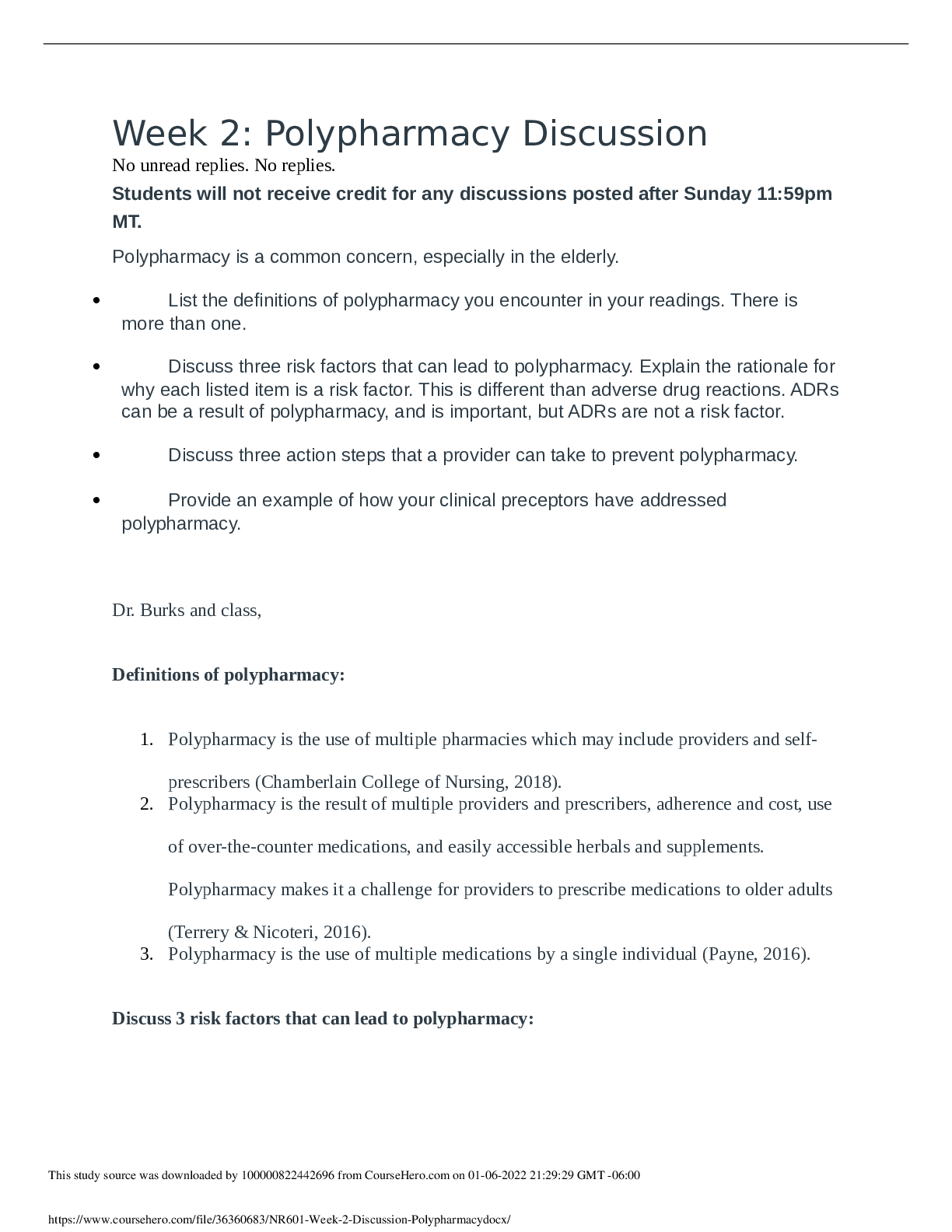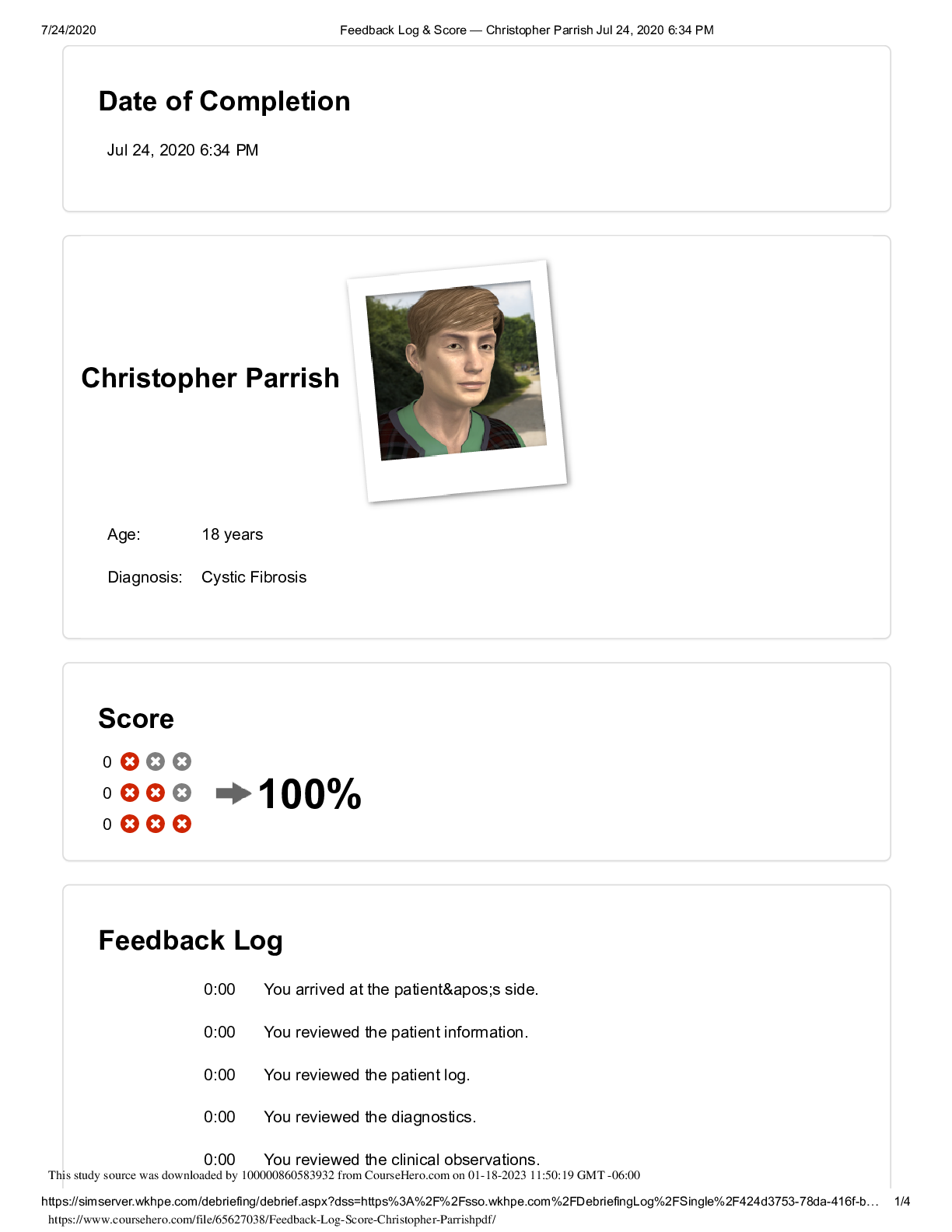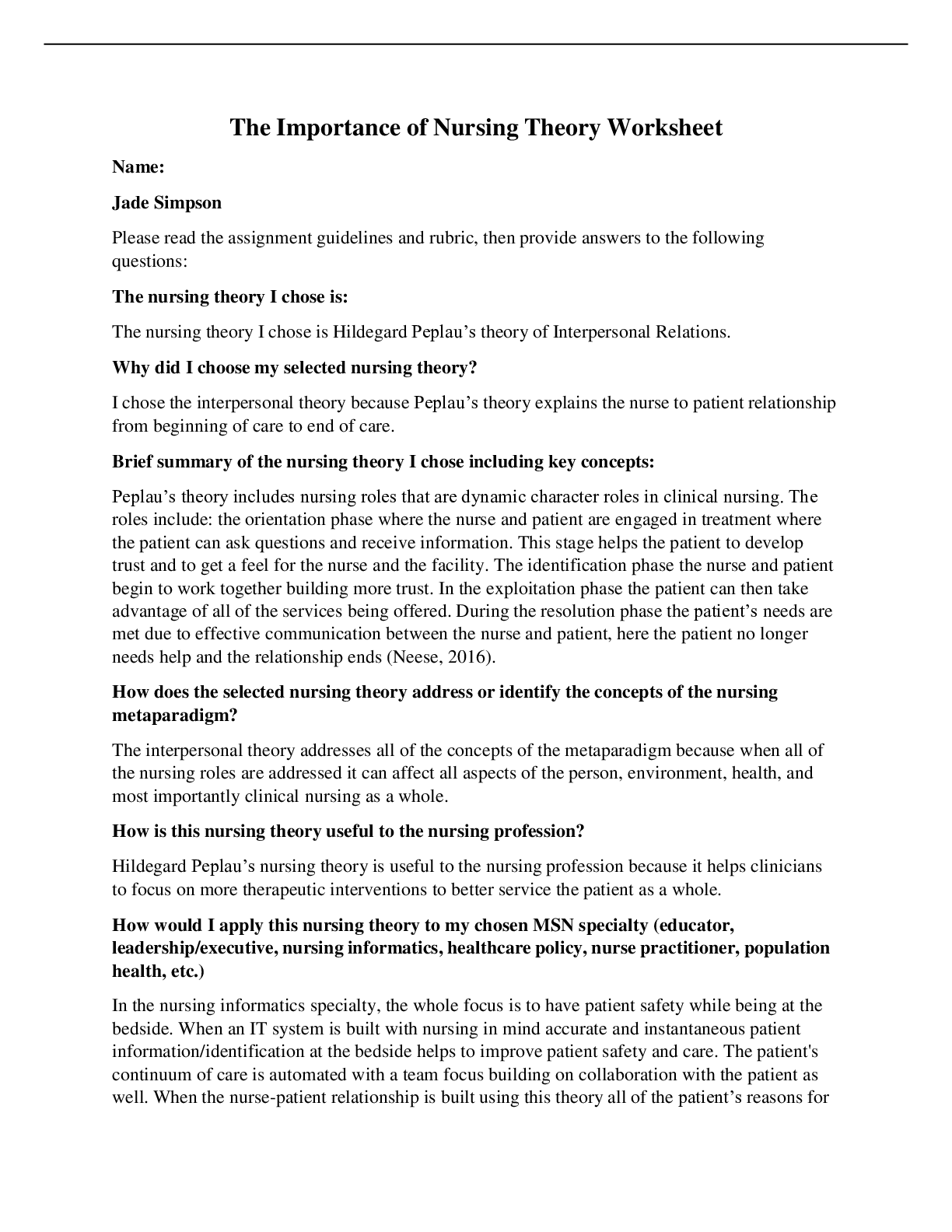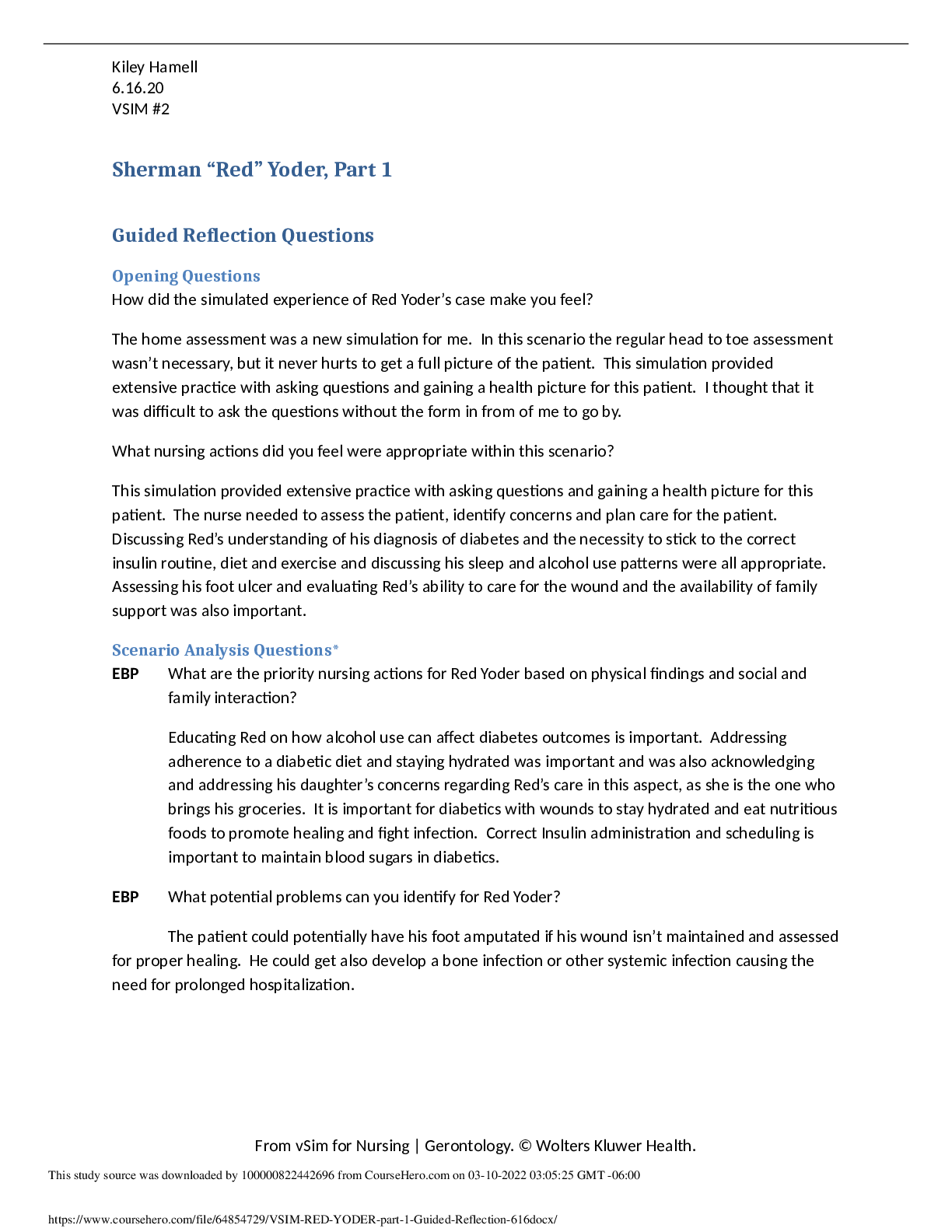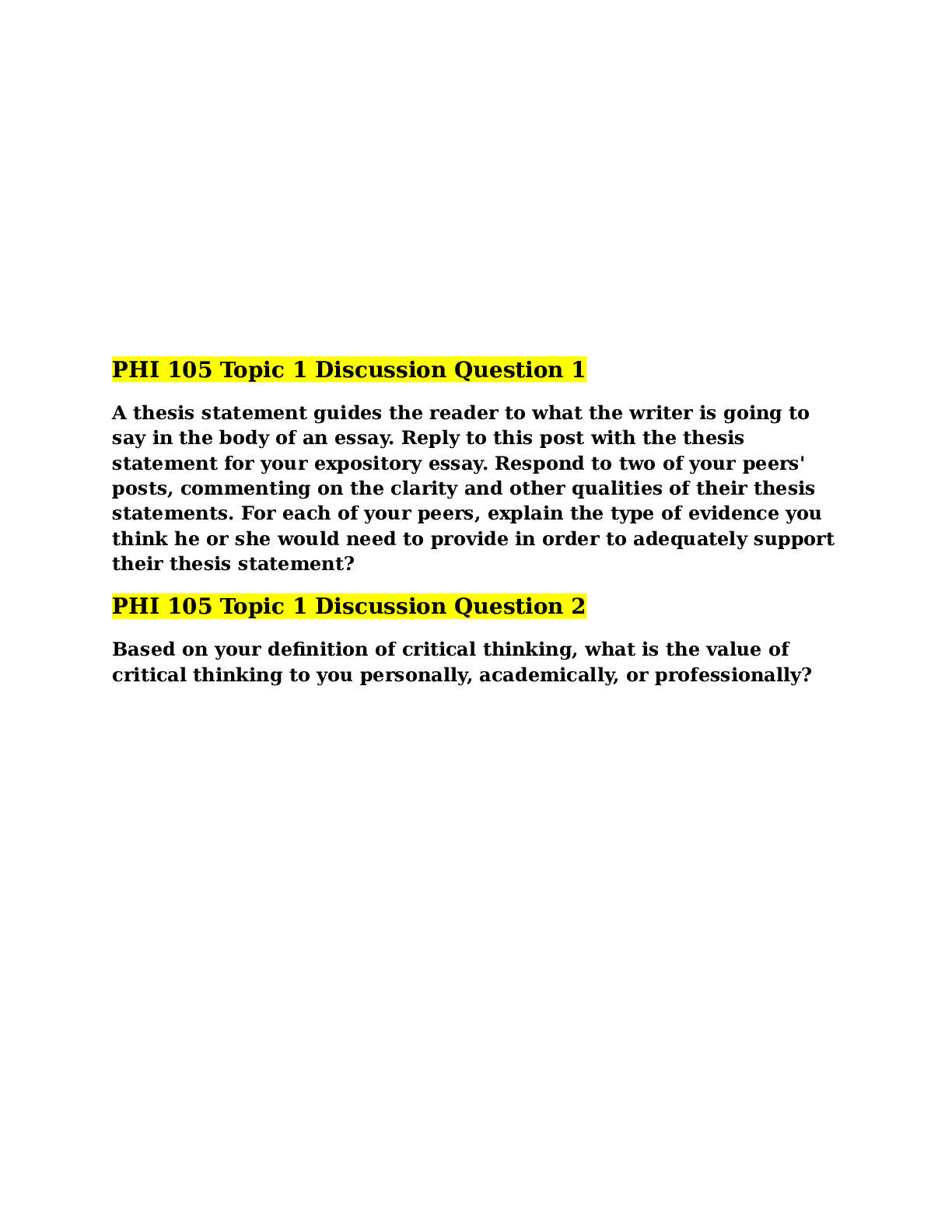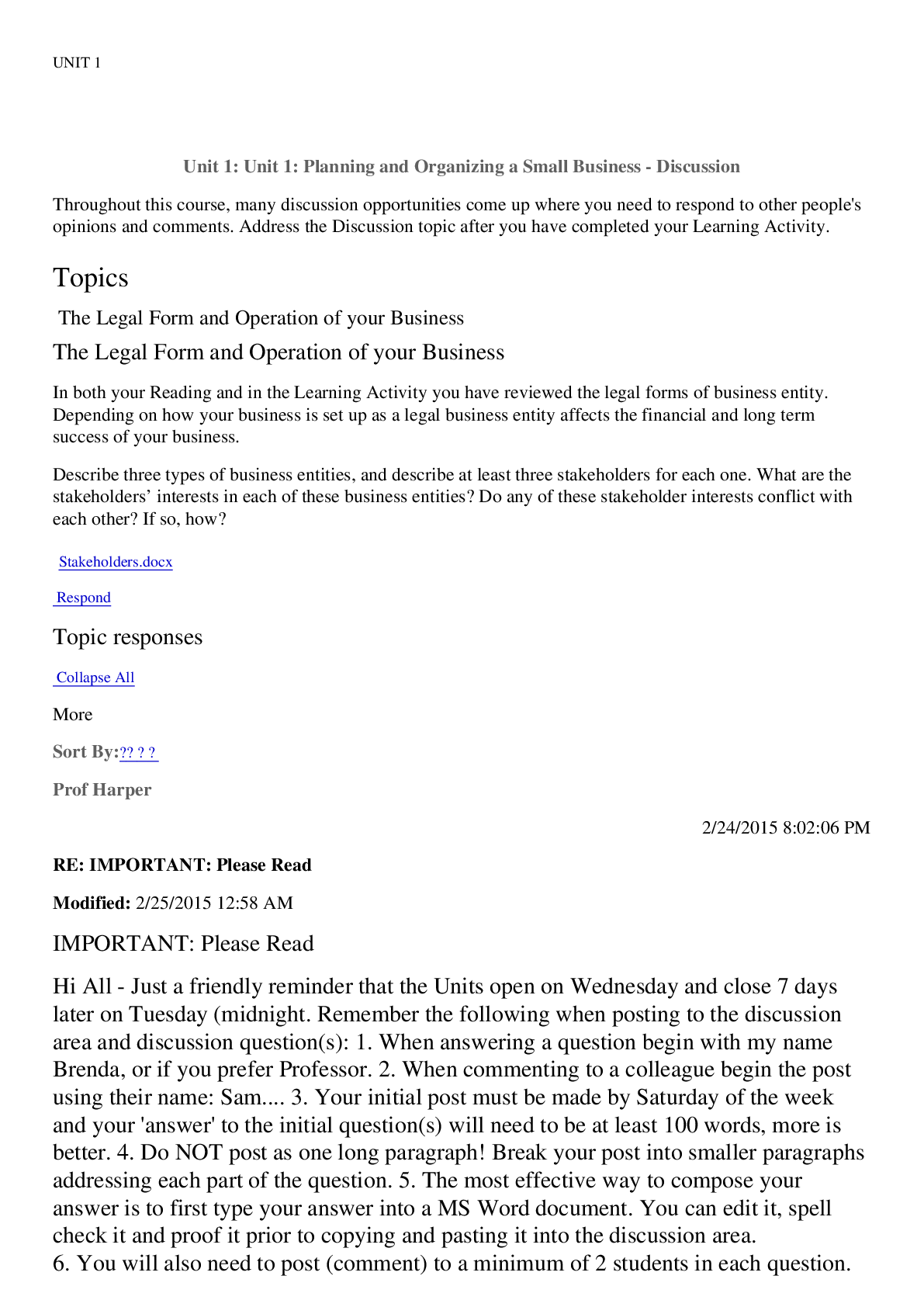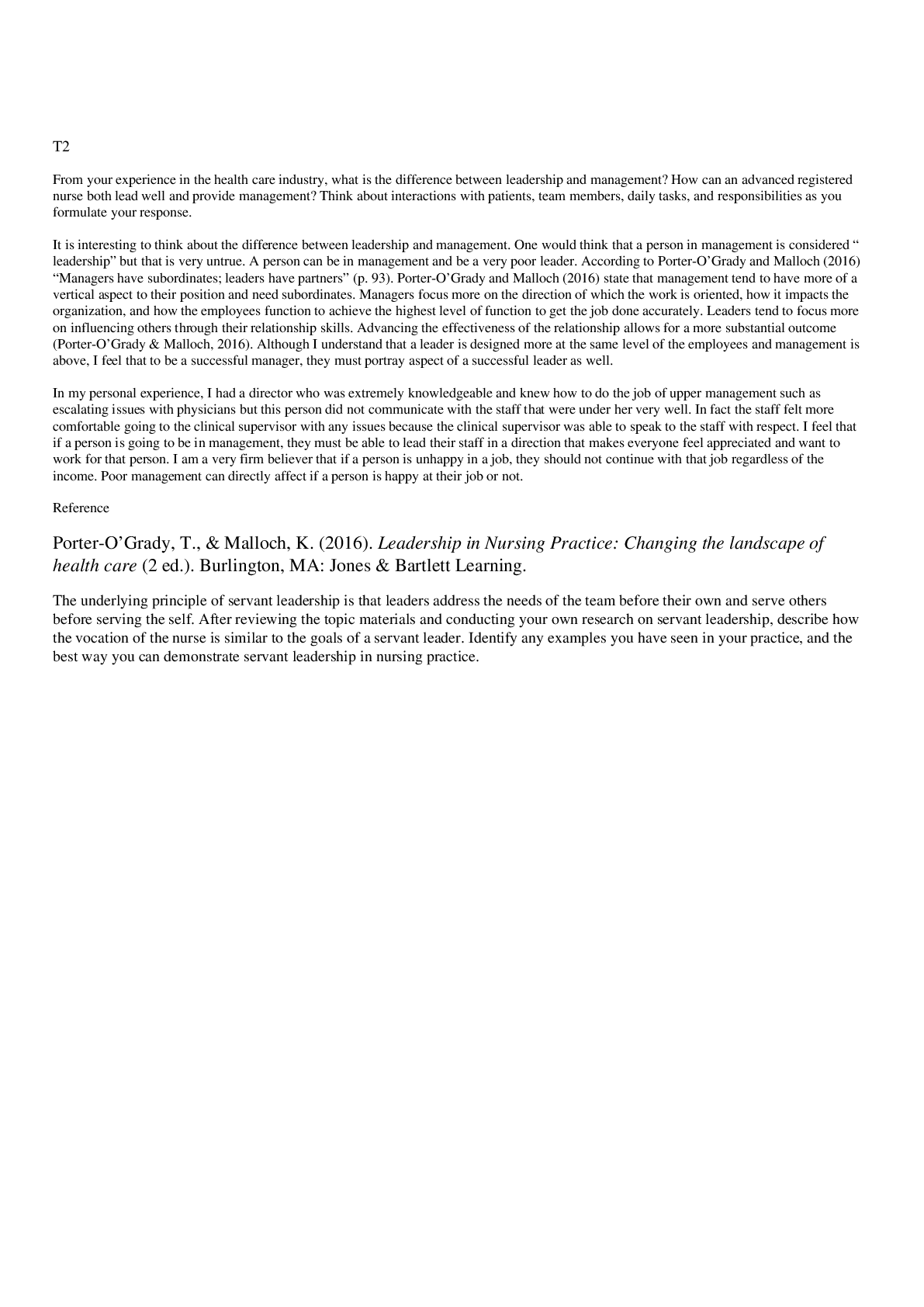*NURSING > DISCUSSION POST > NR 504 Leadership Care Clinic Paper.docx / DOWNLOAD TO SCORE A (All)
NR 504 Leadership Care Clinic Paper.docx / DOWNLOAD TO SCORE A
Document Content and Description Below
NR 504 Leadership Care Clinic Paper.docx Improving the Patient Experience in a Community Care Clinic In today’s healthcare environment where value driven performance is key to reimbursement, he... althcare leaders need to stay focused on improving the patient satisfaction and the overall patient experience. The patient experience represents the patient’s perceptions of the quality of care received in the healthcare setting and can directly impact the success of an organization in many ways including reimbursements, market share and growth. Patinets’ perceptions of the level of courtesy and friendliness of staff is one of the central components of many patient satisfaction surveys. Research suggests that staff courtesy, along with provider communication, wait time, staff follow-up, and medical explanations, are the major components of the patient experience (Cooper, Astroth & Smith, 2016). Patient satisfaction is largely measured by the Hospital Consumer Assessment of Healthcare Providers and Systems survey (HCAHPS). The results of this survey are widely available to consumers who are shopping for a healthcare provider or institution and are used by the Centers for Medicare and Medicaid(CMS) to determine reimbursement. According to McRae (2017), up to 30% of hospitals’ reimbursements can be attributed to patient satisfaction results. A decline in patient satisfaction scores related to the courtesy and friendliness of staff at the Care Clinic could have significant impact unless leadership enacts structured changes. In the Care Clinic, it appears that the low patient satisfaction scores may be a result of lack of attention and responsiveness by the staff as well as unprofessional staff interactions in front of patients. There were several instances where patient questions and concerns were not being acknowledged by the staff. There also seems to be a lack of appreciation for one another’s contributions to patient care as evidenced by the nurse’s reactions to the vital signs not being documented in a timely fashion. These situations vividly demonstrate that lack of courtesy and respect for patients may result not only in decreased satisfaction, but also increase medical errors and the inefficiency care. Due to restructuring of the organization, the Care Clinic has had two different managers within the last three years and has been without a formal manager for the last six months. From a systems perspective, it seems that the, customer service training and leadership presence to identify problems, communicate initiatives and seek support from frontline staff. A leader plays an important role in creating a healthy work environment and evidence demonstrates a positive link between work environment and employee satisfaction and patient outcomes. It takes a village to run a unit or office efficiently (Macleod, 2012). Leadership Dynamics Leadership dynamics plays a central role in changing the existing hospital culture and improving patient experience and satisfaction. Historically, many different styles of leadership have existed, but one approach that is proving to be successful in the complex healthcare environment in the systems perspective. The systems approach views the organization as a dynamic structure where many elements are intimately inter-connected and freely interact with the surrounding environment. A systems leader understands that processes are interdependent on one another and making changes in one area may impact another. In complex and dynamic environments, such as a healthcare organization, it provides a collaborative framework for building and sharing ideas (Ramosa & Berija, 2014). A systems leadership perspective is based on six core qualities of collaboration, value, communication, shared information, focus on process and learning from mistakes. Team work and collaboration are essential components of modern organizations. Although a leader needs to exist to manage, the change process, everyone on the team needs to be recognized for their importance. A crucial element of a systems approach is building and maintaining relationships with a wide network of people. There needs to be a culture created that staff at all levels are committed to the change and support one another. Input from senior leadership is just as important as the input from the staff nurses and the front desk staff (Pidgeon, 2017). In the case of the Care Clinic, input needs to be solicited and valued from staff at all levels. This can be accomplished in staff meetings huddles. Creating a sense that everyone’s job is important their contributions impact the working atmosphere can instill new values and support change (Men & Stacks, 2014). A growing body of research has demonstrated that effective communication and information sharing plays a key role in developing positive employee attitudes such as trust, organizational commitment, job satisfaction, and improved employee relationships within an organization. These attitudes, in turn, can lead to higher productivity, improved performance, improved learning, and better external relations. Long gone are the days of one person having all the information. This type of leadership can imply that one person is more important than another. The entire group should have access to information such as patient comments and organizational plans in order to be more informed. Knowledge sharing can lead to a sense of empowerment and employee engagement. The staff at the Care Clinic need to be made aware of the reasons for their increased volume and what the plans are to address it from a resource standpoint. Comments and patient satisfaction scores should also be shared to provide opportunities for better understanding increased engagement (Men & Stacks, 2014). The last two values focus on creating the process change and the learnings that are associated with it. Translating their knowledge into action and facilitating changes that improve efficiency and effectiveness of workflows is essential. The leader needs to coach staff through the change process and deliver tangible outcomes. It is also important to support a culture of learning and create a culture where failure is acceptable. Systems thinking is well with [Show More]
Last updated: 2 years ago
Preview 1 out of 12 pages
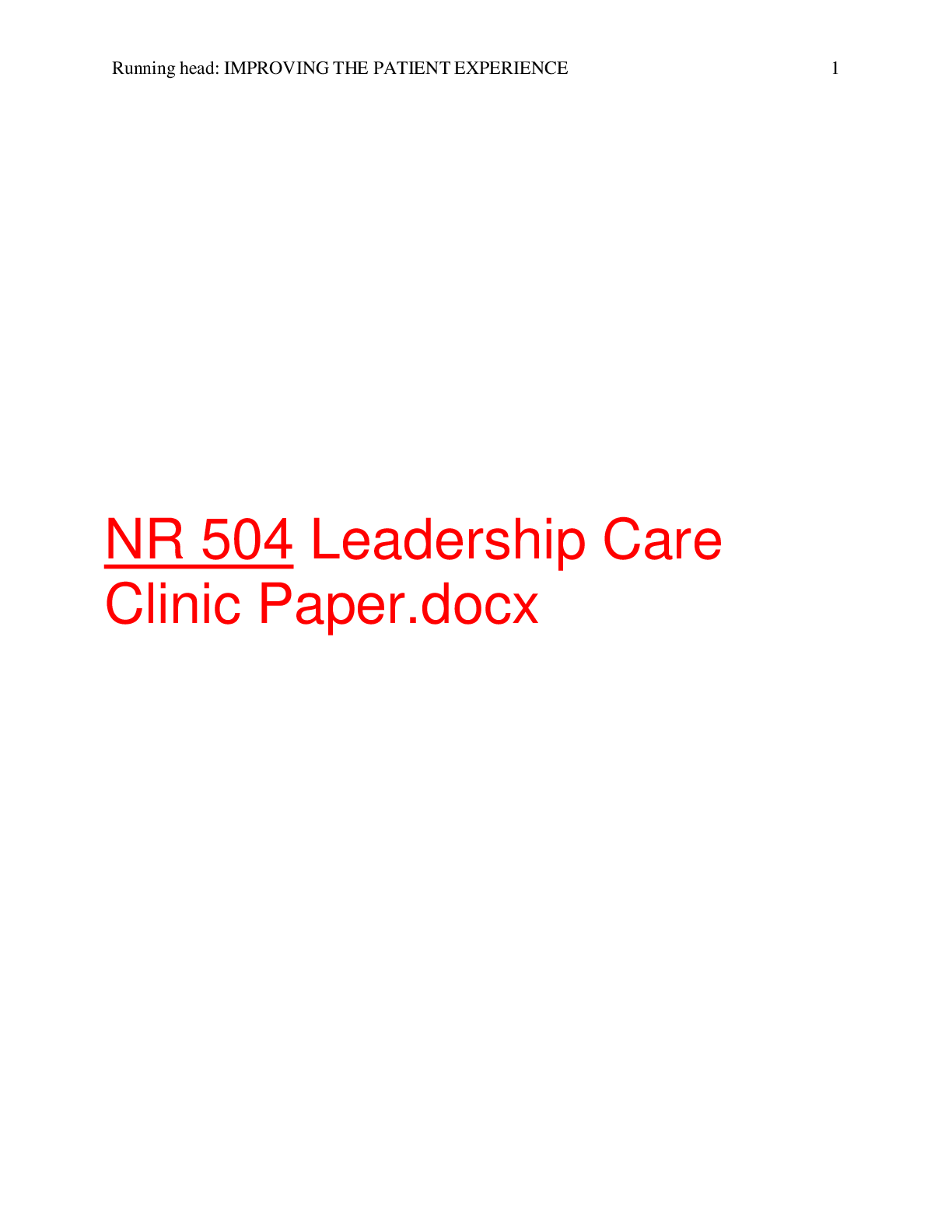
Buy this document to get the full access instantly
Instant Download Access after purchase
Buy NowInstant download
We Accept:

Reviews( 0 )
$12.50
Can't find what you want? Try our AI powered Search
Document information
Connected school, study & course
About the document
Uploaded On
Jul 26, 2021
Number of pages
12
Written in
Additional information
This document has been written for:
Uploaded
Jul 26, 2021
Downloads
0
Views
41

 (1).png)
